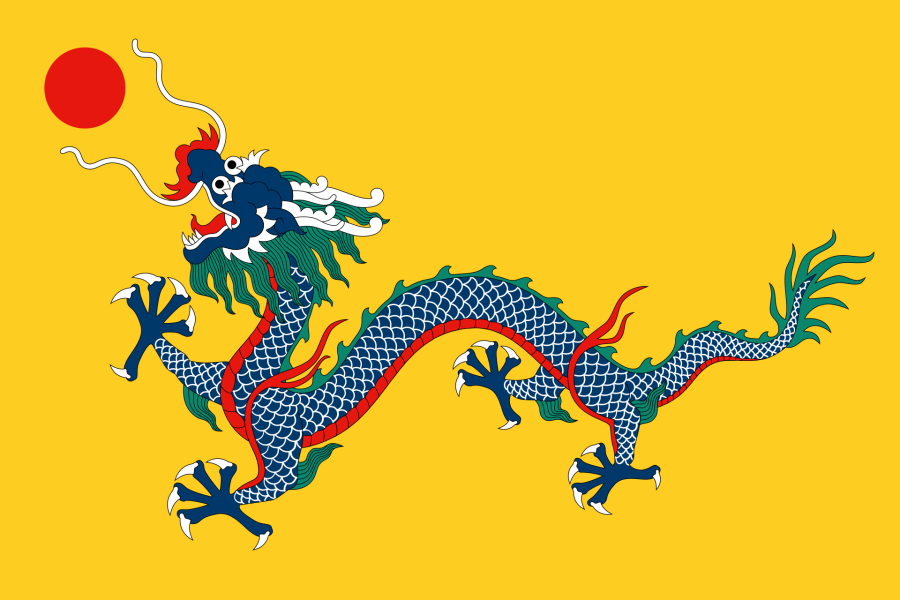In the popular imagination, the 20th century was a time of technological advancement and relative world peace, as we built the computer and finally reached outer space. Look closer, however, and this rosy view doesn’t seem accurate, or at least not for everyone. While it’s true that some parts of the world experienced unprecedented growth and stability during this time—at least in the post-war era—for many others, it was a turbulent and dark period.
10. Problems
From the late 1960s to 1998 year Northern Ireland was embroiled in one of the bloodiest uprisings of the 20th century. Known as the Troubles, it was the brutal culmination of years of conflict between nationalist Irish and unionist British populations in the region controlled by Britain since the 1920s. years It was a large-scale conflict and could even be classified as a war based on the numbers.
During this episode, more than 3,500 people died as rebel Irish paramilitary groups such as the Irish Republican Army (IRA) waged an intense guerrilla war against Ulster loyalist forces allied with the British Army. The conflict left many civilians dead and injured, with more than 47,000 people injured in the crossfire, most of them young men. The period was also marked by several high-profile assassinations, such as Lord Mountbatten And Airy Neave — British Shadow Secretary of State for Northern Ireland in 1979.
Although the unrest officially ended with the Good Friday Agreement in 1998, violence only ceased completely in 2007.
9. Civil War in Guatemala
The Guatemalan civil war began after the Cuban revolution in 1959, when leftist guerrilla groups in the country began 36 years old an armed conflict against the Guatemalan state. It was the longest-running struggle in modern Latin American history, killing hundreds of thousands of people and leaving millions of others homeless.
The conflict is still remembered for its exceptional brutality against civilians, especially those of Mayan descent. Much of the violence can be attributed to paramilitary death squads affiliated with the state or local landowners or directly controlled by them This included summary executions, sexual violence, torture, mutilation, violence against children and the systematic destruction of settlements.
The worst phase of the conflict occurred in the early 1980s, when paramilitary forces launched counterinsurgency measures aimed at eliminating the rebel population. During this time, between 70% and 90% of the population were killed in the worst-hit provinces, a figure that has since been acknowledged UN genocide .
8. Hutu Revenge for Genocide
Most people know about the Rwandan genocide of 1994, when more than 80% Tutsi minorities were massacred by Hutus following the assassination of President Juvénal Habyarimana. However, much less discussed is the immediate impact of this tragedy on surrounding regions, particularly the Democratic Republic of Congo.
Throughout 1996 and 1997, Hutu refugees in Congo were subjected to a repressive genocide by the now Tutsi-led Rwandan government. During the First Congo War, Rwandan-backed rebels committed several massacres in the eastern part of the country, mainly against Hutu refugees who had fled Rwanda after the civil war, but also against local Congolese Hutu. Were applied cruel methods of execution, because tens of thousands Civilians were killed in a campaign of ethnic cleansing that would shape politics and social relations in the region for years to come.
7. Japanese invasion of Manchuria
The Sino-Japanese War officially began in 1937, although the conflict in China continued for much longer . Japan invaded the Chinese province of Manchuria in In 1931 and created a puppet state Manchukuo , starting a conflict that lasted until the defeat of the Japanese Empire in 1945.
Throughout the war, Japanese forces committed numerous atrocities in many parts of China. While some are well known – such as the Nanjing Massacre in 1937, when the invading army terrorized hundreds of thousands of civilians in Nanjing over six weeks – others are now largely forgotten. Like Germany, Japan also conducted extensive experiments on the conquered population, with major laboratories operating in Manchukuo The details are gruesome, as the experiments were usually carried out in brutal and inhumane ways. The victims were usually prisoners of war captured during the invasion, many of whom died within weeks of the experiments.
6. Iran-Iraq War
On September 22, 1980, Iraqi forces launched a full-scale invasion of Iran, beginning a conflict that would be characterized by inhumane killing methods such as chemical attacks , and widespread violence against civilians. The Iran–Iraq War was one of the longest conflicts of the 20th century, lasting nearly eight years until a ceasefire was reached in 1988 (although a formal peace agreement was not signed until August 16, 1990).
The conflict would have a profound impact on the geopolitics of the Middle East and beyond, even if it was largely forgotten outside the immediate regions where it was fought. Iraq made excessive use of its chemical weapons arsenal, both against civilians and on the battlefield against Iranian soldiers. Violence was also directed against Kurdish insurgents inside Iraq – in March 1988, between 3,000 and 5,000 people were killed in a massive chemical attack in a Kurdish-Iraqi town Halabja .
5. Genocide of Herero and Namaqua
At the turn of the 20th century, Germany controlled one of the largest colonial empires in the world, almost all of it in Africa. 1904 and 1907 The Herero and Namaqua tribes of Namibia suffered what many historians now recognise as the first genocide of the 20th century, almost all of it perpetrated by professional German troops. In numbers, over 80% Herero and 50% Namaqua were exterminated, often in brutal and inhumane ways that were repeated in many battles and concentration camps until the end of World War II.
On the German side it was a war of destruction , which was carried out with the aim of completely replacing the local population with German settlers. Although it began as a Herero rebellion, they were quickly crushed by superior German firepower, and some of the worst atrocities against the indigenous population in the history of colonial Europe followed. Many were forced into the desert to die of starvation or heat; others were forced to work in concentration camps until they died, or were subjected to torture, experiments, rape, and even beheading .
4. Partition of India
In August 1947, India was partitioned into the modern states of Hindu-majority India and Muslim-majority Pakistan, finally granting independence to the long-time British colony. While it was a moment for celebration, the period is now remembered for widespread violence on both sides of the border, leading to one of the biggest humanitarian crises of the 20th century.
Moretwo million people died as a number of Hindus, Sikhs and Muslims on both sides of the border began one of the largest mass migrations in human history. More than 14 million people would be left homeless by the violence, almost all of which was directed against civilians. Although it is not recognized as genocide, some British soldiers and journalists who witnessed it later described it as worse than the Nazi concentration camps.
3. Late Ottoman Genocide
The First World War was as full of atrocities and dark phases as the Second, though it hardly receives the same attention in modern readings of 20th-century history. One of the darkest was the collapse of the Ottoman Empire, followed by brutal violence and campaigns of ethnic cleansing in the new territories.
Some historians view them as a continuous series of genocides known as Late Ottoman Genocide , even though there are quite a few in Turkey disputes as to whether they should be considered genocides. Although Armenian Genocide still remembered and talked about today, it also included violence against Assyrians, Greeks, Kurds, Arabs, Jews and others. As the vast empire that once stretched By As Eastern Europe, North Africa and the Middle East disintegrated and gave way to new nations in the Middle East, old ethnic tensions between communities and the new geopolitical realities of the region led to numerous atrocities, often committed by the armed forces of the new states.
2. Colonial Belgian rule
From 1885 to 1908 year The country of Congo was run entirely as a private enterprise by the Belgian King Leopold II. Known as the Congo Free State, it was the only private colony in history, with its own private army and local militias that controlled the region's lucrative resources. The period was marked by exceptional brutality towards the local population, so much so that a handful of other empires, including other European colonial powers that had used similar tactics in their colonies, had to band together and intervene to put an end to it.
Although figures are disputed, the Congolese population has declined over this time With 20 to 10 million people. Natives were often kidnapped and forced to work for resources such as ivory and rubber. Torture, sexual violence, amputations and exhaustion were common in places such as plantations and mines, as Leopold's armies strictly and brutally controlled productivity. There were several rebellions, though they were often ruthlessly suppressed, followed by retaliatory attacks on the local population.
1. Eastern Front of World War II

The Eastern Front of World War II was undoubtedly the largest military confrontation in history, even if modern history textbooks hardly pay it the same attention as, say, the Pacific and Western European theaters. Stretching across a front that was more than 1000 miles, with a total of over 400 Red Army and German divisions, it can be said that this was the place where the war was really fought and decided.
The Eastern Front also saw some of the worst atrocities of the war, although much of it is simply mentioned in numbers in post-war figures. Here, Nazi violence was not limited to the Jewish population, but also to other communities such as Roma, Russians, Poles, prisoners of war and others. In the occupied territories, mass murders committed by German death squads and local collaborators, were commonplace, often carried out in brutal and horrific ways. Unlike the West, the war in the East was fought as a war of total annihilation, and there were few historical parallels in terms of scale or brutality.













Оставить Комментарий